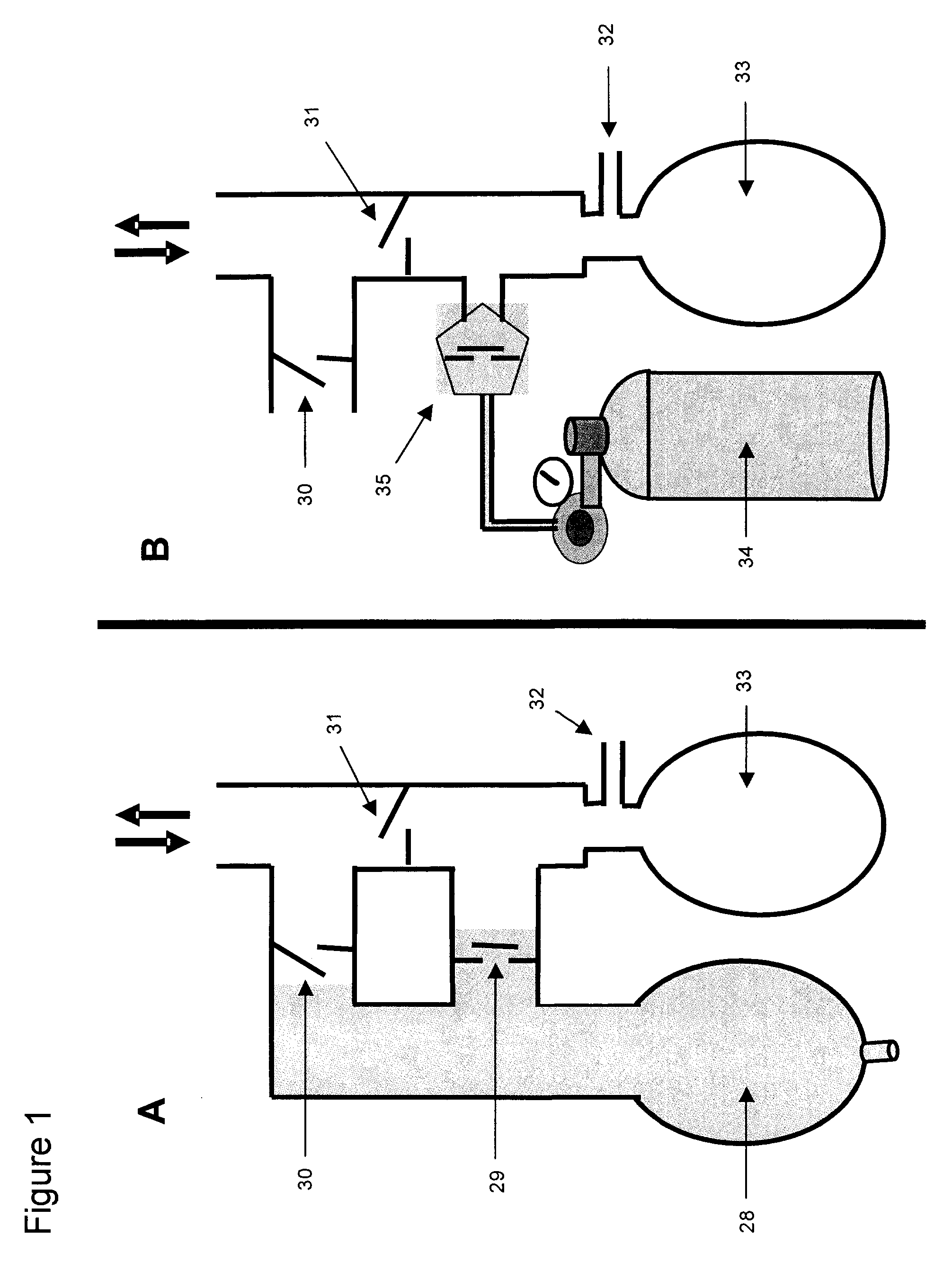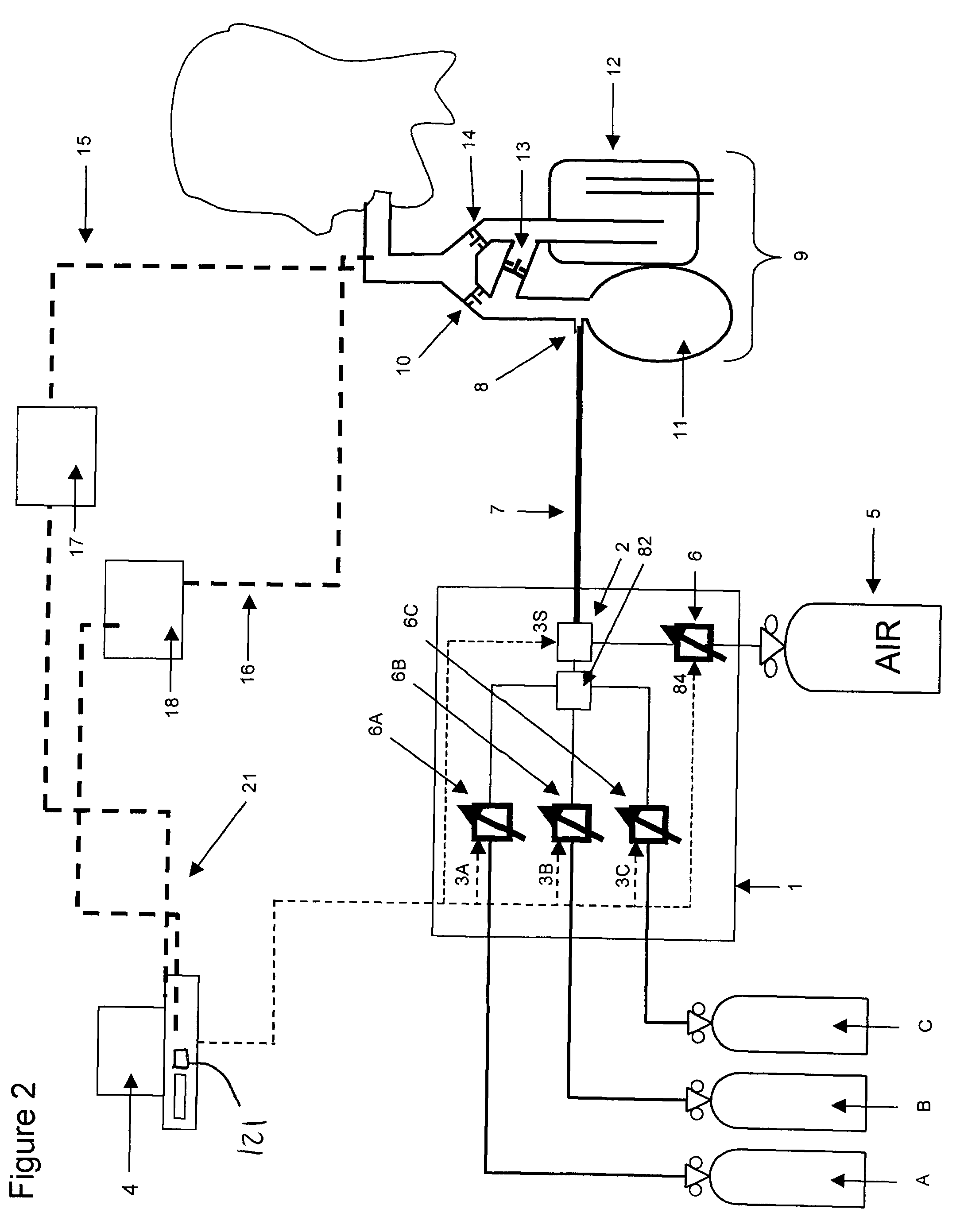Method and apparatus to attain and maintain target end tidal gas concentrations
a technology of end-tidal gas and target concentration, which is applied in the field of blood gas control, can solve the problems of large variability in petco, poor use of breath holding time to quantitate the strength of stimulus, and inability to measure cvr
- Summary
- Abstract
- Description
- Claims
- Application Information
AI Technical Summary
Benefits of technology
Problems solved by technology
Method used
Image
Examples
Embodiment Construction
[0089]It should be noted that gas concentrations described herein may be referred to as partial pressures (e.g. PCO2) or as fractional concentrations (e.g FCO2). Those skilled in the art will recognize the relationship between the two in that partial pressure=fractional concentration x ambient atmospheric pressure.
Glossary Terms
[0090]
OxygenO2Carbon dioxideCO2NitrogenN2Partial pressure of oxygenPO2Partial pressure of carbon dioxidePCO2Partial pressure of nitrogenPN2Partial pressure of oxygen in end tidal gasPETO2Partial pressure of carbon dioxide in end tidal gasPETCO2O2 consumption{dot over (V)}O2CO2 production{dot over (V)}CO2Alveolar ventilation{dot over (V)}AMinute ventilation{dot over (V)}ERespiratory quotientRQTarget end tidal CO2FTETCO2Target end tidal O2FTETO2Minute ventilation{dot over (V)}ESequential gas delivery (breathing circuit)SGDSource gas, or gas inhaled first from an SGDG1Reserve gas, or gas inhaled second from an SGDG2Flow of fresh gas{dot over (V)}G1Flow of reserv...
PUM
 Login to View More
Login to View More Abstract
Description
Claims
Application Information
 Login to View More
Login to View More - R&D
- Intellectual Property
- Life Sciences
- Materials
- Tech Scout
- Unparalleled Data Quality
- Higher Quality Content
- 60% Fewer Hallucinations
Browse by: Latest US Patents, China's latest patents, Technical Efficacy Thesaurus, Application Domain, Technology Topic, Popular Technical Reports.
© 2025 PatSnap. All rights reserved.Legal|Privacy policy|Modern Slavery Act Transparency Statement|Sitemap|About US| Contact US: help@patsnap.com



